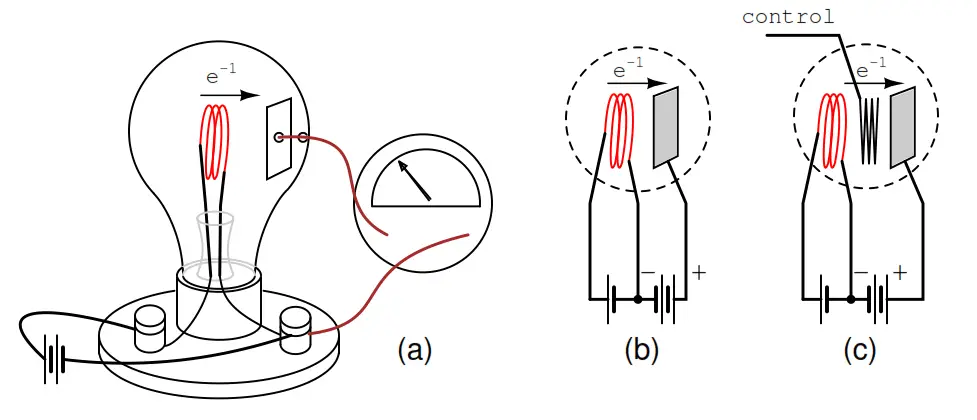Active Devices
An active device is any type of circuit component with the ability to electrically control electron flow (electricity controlling electricity).
In order for a circuit to be properly called electronic, it must contain at least one active device.
Passive Devices
Components incapable of controlling current by means of another electrical signal are called passive devices. Resistors, capacitors, inductors, transformers, and even diodes are all considered passive devices.
Active devices include, but are not limited to, vacuum tubes, transistors, silicon-controlled rectifiers (SCRs), and TRIACs.
A case might be made for the saturable reactor to be defined as an active device, since it is able to control an AC current with a DC current, but I’ve never heard it referred to as such. The operation of each of these active devices will be explored in later chapters of this volume.
Functions of Active Devices
All active devices control the flow of electrons through them. Some active devices allow a voltage to control this current while other active devices allow another current to do the job.
Devices utilizing a static voltage as the controlling signal are, not surprisingly, called voltage-controlled devices. Devices working on the principle of one current controlling another current are known as current-controlled devices.
For the record, vacuum tubes are voltage-controlled devices while transistors are made as either voltage-controlled or current controlled types. The first type of transistor successfully demonstrated was a current-controlled device.

